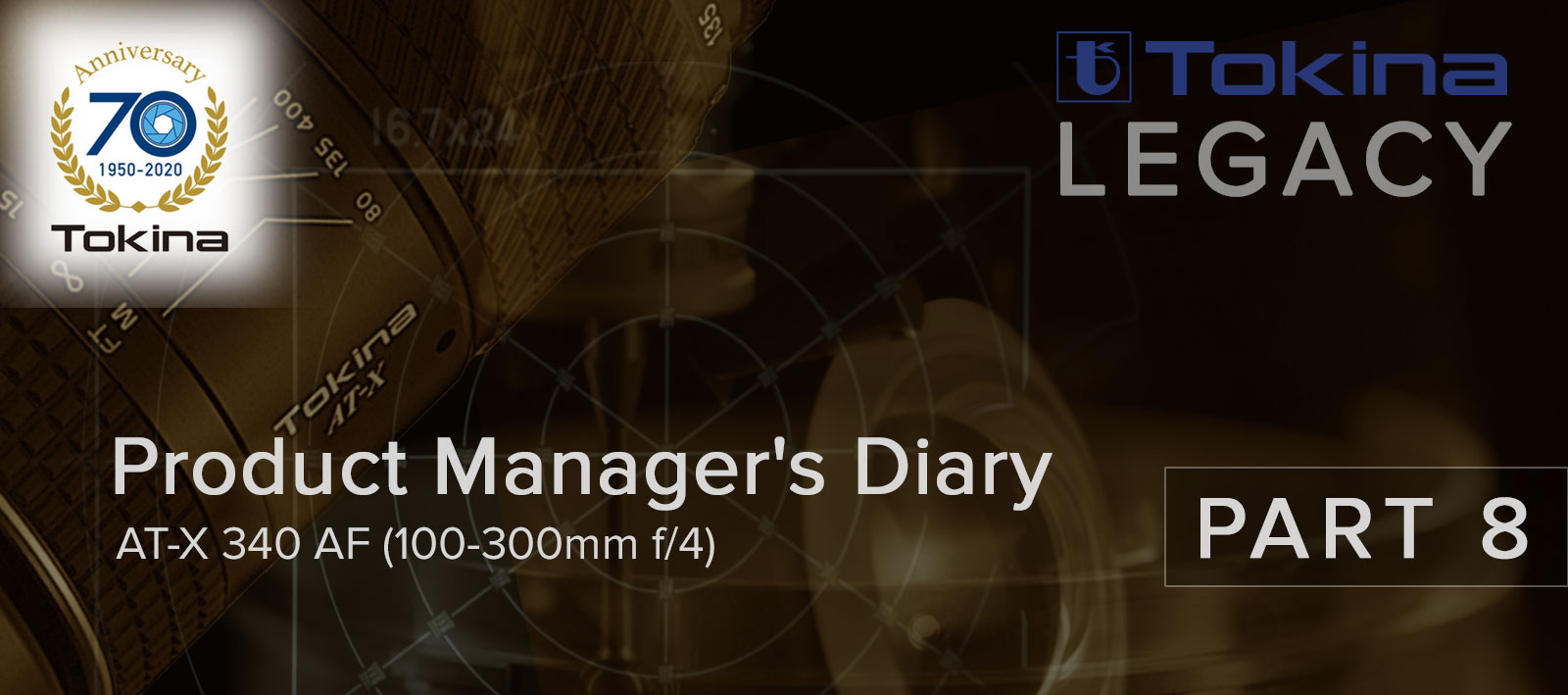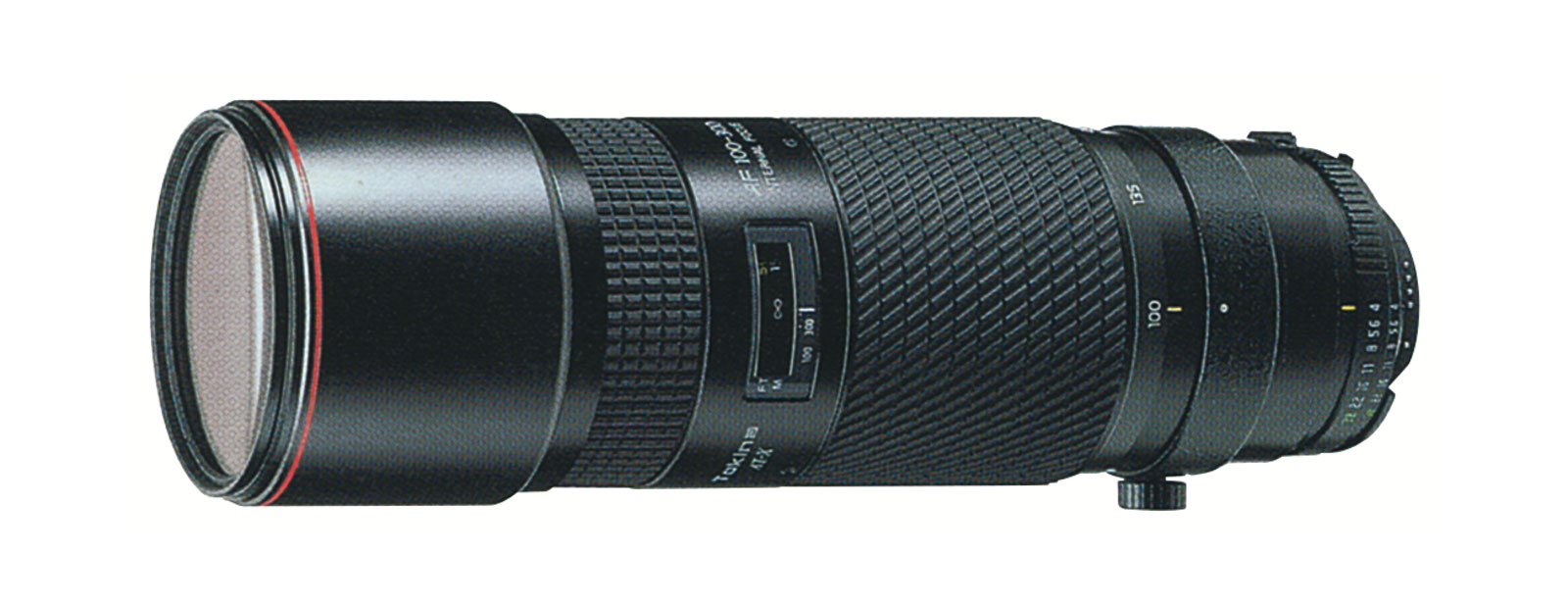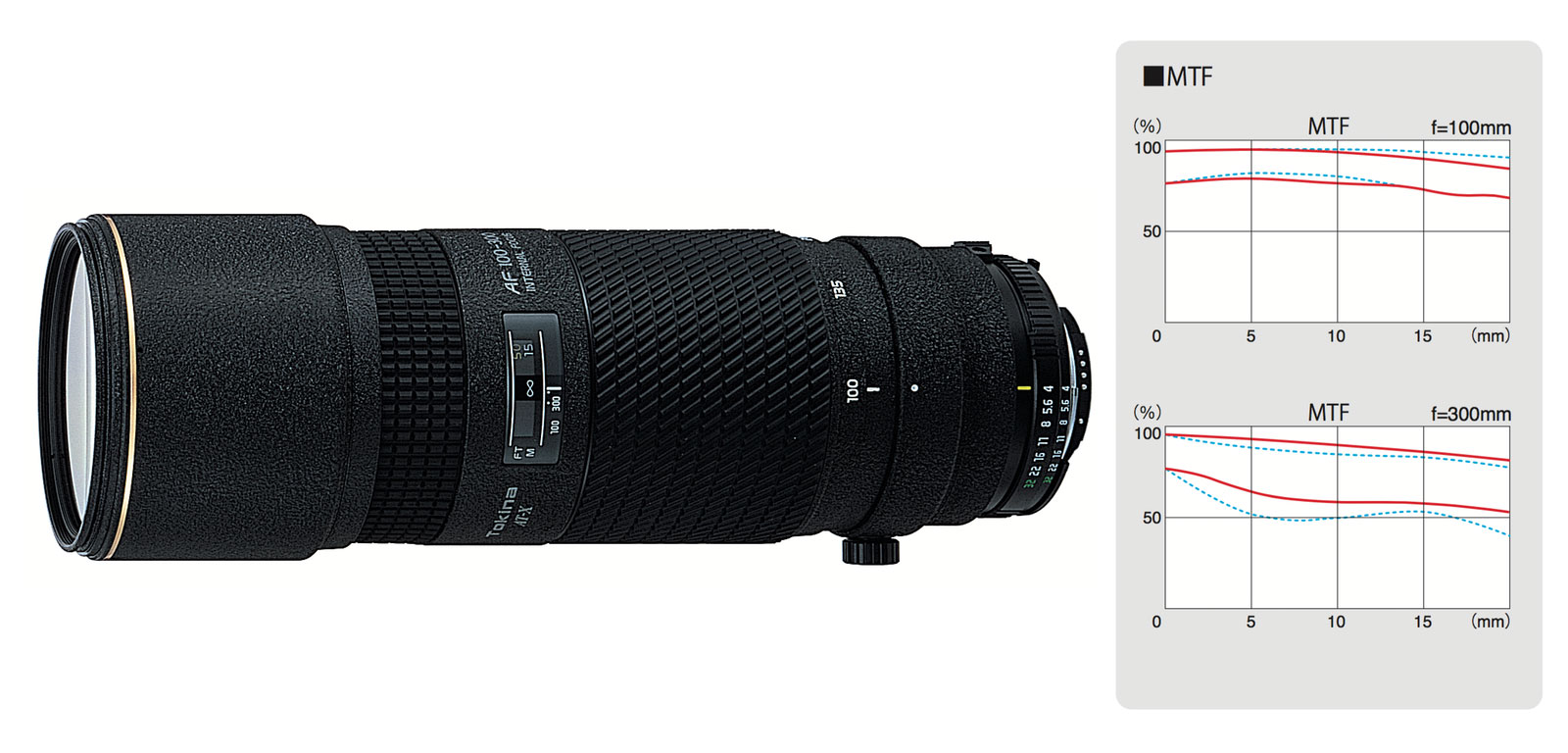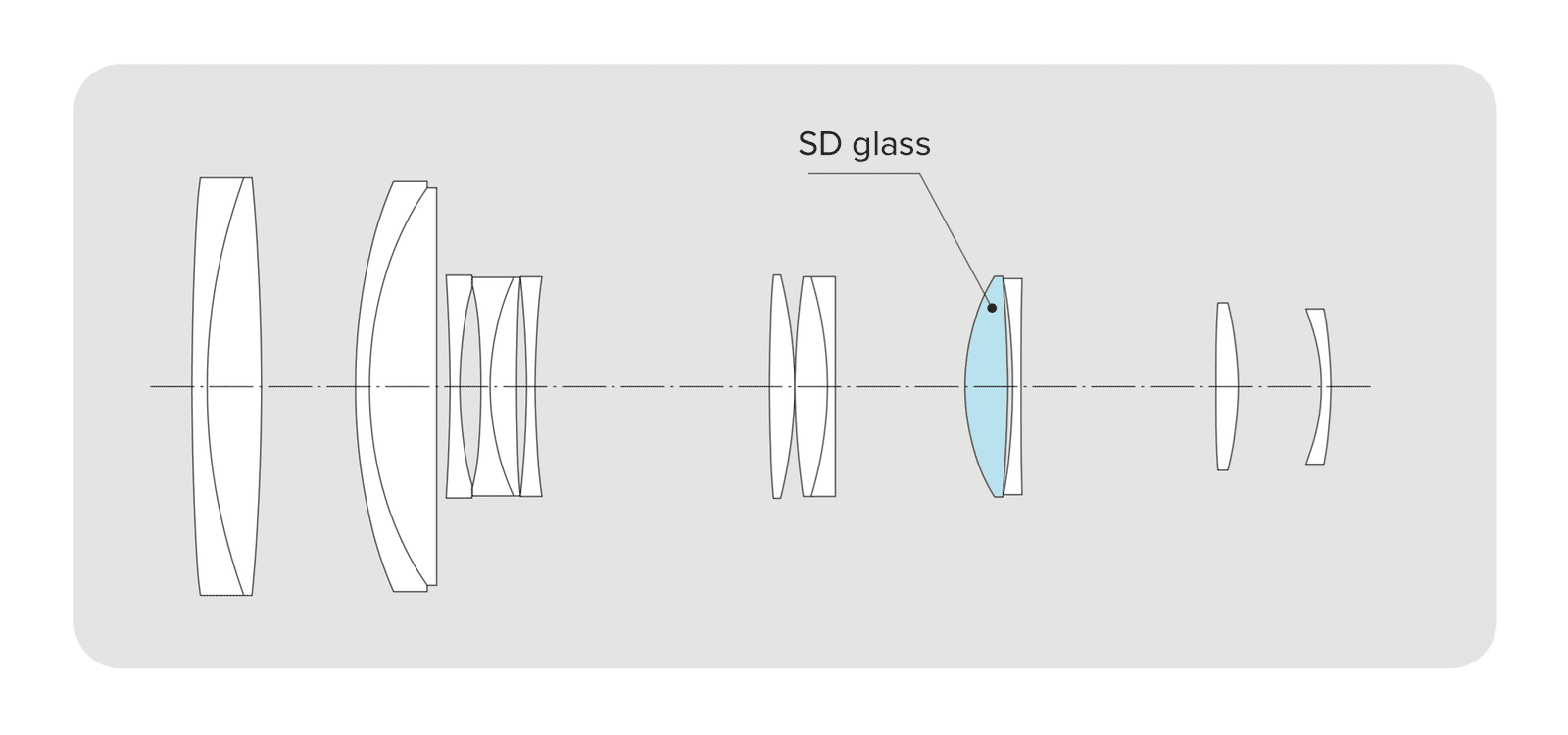Product Manager's Diary (part 8)
PART 8: Tokina AT-X 340 AF, AT-X 340 AF II
Released in 1993
Tokina released a manual zoom lens called "AT-X 100" (100-300mm f/4) in 1985. This type of lens was requested by newscast photographers. Besides the 80-200mm f/2.8 zoom lens, we created the above high-performance telephoto zoom lens with a maximal focal length of 300mm, incorporating an aperture of f/4. In the AF era, circa 1993, Tokina released the Auto-focus version - the AT-X 340 AF (100-300mm f/4). The latter had the same specifications as the former, however, the optical design was adjusted for the AF system and featured a 'Front Inner Focus' (Tokina's exclusive technology), which was quite rare at the time.
The lens had not changed its length when one wanted to change the focal length, and I do remember that among those users who purchased this high-performance telephoto there were many professional photographers. I assume that the only thing that was challenging the users would have been whether to purchase the faster lens - the 80-200mm f/2.8 - or the newer 100-300mm f/4. Despite both being telephoto lenses, they had different capabilities: Should one choose a faster aperture on one hand or a longer focal length on the other hand?
An additional issue to consider was the price tag difference. Both lenses were, more-or-less, having the same weight of 1.5kg. However, the 100-300mm f/4 was quite expensive compared to the 70-200mm. Indeed, that was hard to choose which one would be better for them to use. In my mind, I was muttering to myself, "you know, our lens performance on the telephoto side was excellent" (lol). At that time, there was no other telephoto zoom lens from Tokina with better performance.
So, in 1997, we released the AT-X 340 AF II, which had the same optical design. The newer lens was manufactured to look in similar lines to the entire AT-X series of that era: crep coating and a gold ring at the front of the lens to give them a luxurious appearance. The AT-X 340 AF II had 9 aperture blades.
Why did we not escalate the AT-X 340 AF II as a PRO version? Well, my meticulous (lol) nature made me choose to go with the II version. Indeed, the wonderful optical performance, fixed f-number, and the other specs were altogether perfectly matching for the PRO series. Turning the product into a PRO meant that it would have involved an increased cost due to the installation of the 'One-Touch Focus Clutch' mechanism. Also, because the lens was, overall, quite long that even if the focus ring rotates at AF mode, it would not impair shooting operability.
Despite the wonderful optical capabilities, it didn't sell that well. We, at Tokina, acknowledged it. Personally, I did not feel sad. Back then, at that distant era, Tokina had allocated resources to release products based on personal likings. I'll admit it now, that there were quite a few models that I tricked the company into developing because I wanted to use them. Oh yes, after a while, Sigma released a lens with the same specifications. I'm honored that Sigma has imitated Tokina. But I suppose it didn't sell well as well.
Personally, I liked the 100-300mm f/4. It's heavy indeed. However, when mounted on the body, it's incredibly stable and has very little shaking. Also, the AF speed was fast for the era, even without the ultrasonic motor. In terms of optical performance, it was a real good telephoto zoom lens. I think that even in the digital era, I'm sure the image quality was acceptable for bodies with 1.6-megapixel class image sensors.



